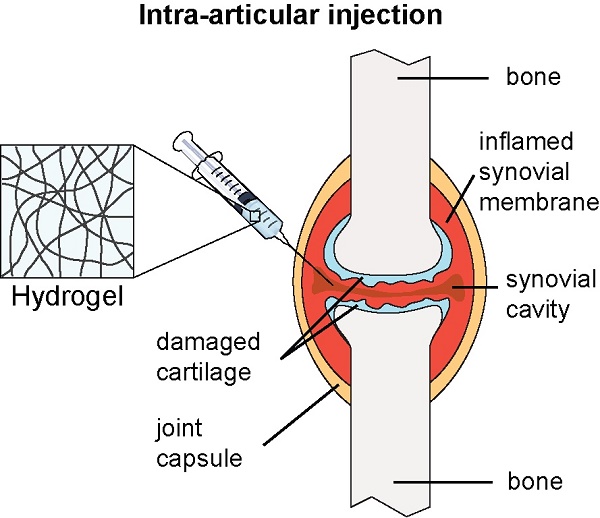当前位置:
X-MOL 学术
›
Theranostics
›
论文详情
Our official English website, www.x-mol.net, welcomes your feedback! (Note: you will need to create a separate account there.)
Surface De-PEGylation Controls Nanoparticle-Mediated siRNA Delivery In Vitro and In Vivo
Theranostics ( IF 12.4 ) Pub Date : 2017-05-12 , DOI: 10.7150/thno.18136 Xi Zhu , Wei Tao , Danny Liu , Jun Wu , Zilei Guo , Xiaoyuan Ji , Zameer Bharwani , Lili Zhao , Xiaoping Zhao , Omid C. Farokhzad , Jinjun Shi
Theranostics ( IF 12.4 ) Pub Date : 2017-05-12 , DOI: 10.7150/thno.18136 Xi Zhu , Wei Tao , Danny Liu , Jun Wu , Zilei Guo , Xiaoyuan Ji , Zameer Bharwani , Lili Zhao , Xiaoping Zhao , Omid C. Farokhzad , Jinjun Shi

|
The present work proposes a unique de-PEGylation strategy for controllable delivery of small interfering RNA (siRNA) using a robust lipid-polymer hybrid nanoparticle (NP) platform. The self-assembled hybrid NPs are composed of a lipid-poly(ethylene glycol) (lipid-PEG) shell and a polymer/cationic lipid solid core, wherein the lipid-PEG molecules can gradually dissociate from NP surface in the presence of serum albumin. The de-PEGylation kinetics of a series of different lipid-PEGs is measured with their respective NPs, and the NP performance is comprehensively investigated in vitro and in vivo. This systematic study reveals that the lipophilic tails of lipid-PEG dictate its dissociation rate from NP surface, determining the uptake by tumor cells and macrophages, pharmacokinetics, biodistribution, and gene silencing efficacy of these hybrid siRNA NPs. Based on our observations, we here propose that lipid-PEGs with long and saturated lipophilic tails might be required for effective siRNA delivery to tumor cells and gene silencing of the lipid-polymer hybrid NPs after systemic administration.
中文翻译:

表面去聚乙二醇化控制纳米颗粒介导siRNA传递在体外和体内
本工作提出了一种独特的去聚乙二醇化策略,可使用强大的脂质-聚合物杂化纳米颗粒(NP)平台控制小干扰RNA(siRNA)的可递送。自组装杂化NP由脂质-聚(乙二醇)(脂质-PEG)壳和聚合物/阳离子脂质固体核组成,其中脂质-PEG分子可以在血清白蛋白存在下从NP表面逐渐解离。 。用它们各自的NP测量一系列不同脂质-PEG的去PEG化动力学,并且在体外和体内全面研究了NP性能。。这项系统的研究表明,脂质PEG的亲脂性尾部决定了其从NP表面的解离速率,从而决定了肿瘤细胞和巨噬细胞的摄取,药代动力学,生物分布以及这些杂合siRNA NP的基因沉默功效。基于我们的观察,我们在这里提出,将长而饱和的亲脂性尾巴的脂质-PEGs可能需要有效地将siRNA递送至肿瘤细胞,并在全身性给药后使脂质-聚合物杂化NPs基因沉默。
更新日期:2017-07-01
中文翻译:

表面去聚乙二醇化控制纳米颗粒介导siRNA传递在体外和体内
本工作提出了一种独特的去聚乙二醇化策略,可使用强大的脂质-聚合物杂化纳米颗粒(NP)平台控制小干扰RNA(siRNA)的可递送。自组装杂化NP由脂质-聚(乙二醇)(脂质-PEG)壳和聚合物/阳离子脂质固体核组成,其中脂质-PEG分子可以在血清白蛋白存在下从NP表面逐渐解离。 。用它们各自的NP测量一系列不同脂质-PEG的去PEG化动力学,并且在体外和体内全面研究了NP性能。。这项系统的研究表明,脂质PEG的亲脂性尾部决定了其从NP表面的解离速率,从而决定了肿瘤细胞和巨噬细胞的摄取,药代动力学,生物分布以及这些杂合siRNA NP的基因沉默功效。基于我们的观察,我们在这里提出,将长而饱和的亲脂性尾巴的脂质-PEGs可能需要有效地将siRNA递送至肿瘤细胞,并在全身性给药后使脂质-聚合物杂化NPs基因沉默。



























 京公网安备 11010802027423号
京公网安备 11010802027423号